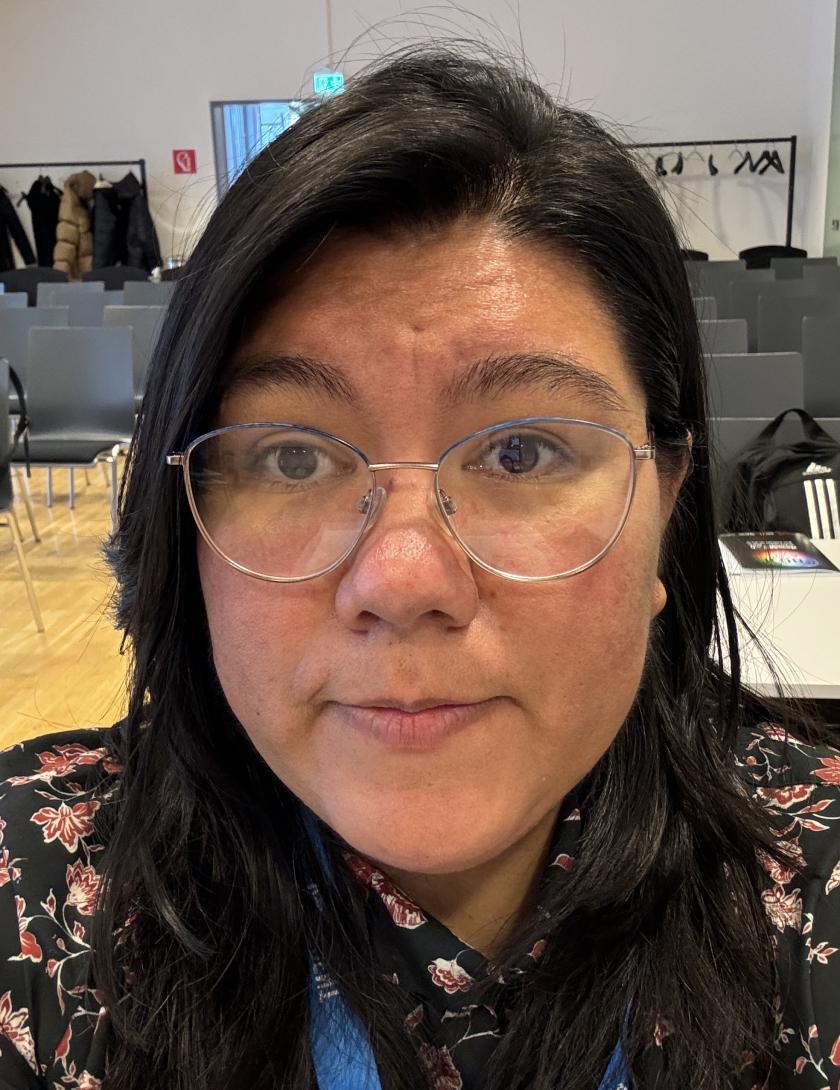Research by INAOE graduate, among the 30 most outstanding in Optics in 2023
Santa María Tonantzintla, Puebla, December 11, 2023. The article “Correlation-based imaging of moving objects in complex media” by Yessenia Jáuregui Sánchez, graduate of the National Institute of Astrophysics, Optics and Electronics (INAOE), Conahcyt center, has has been recognized by the magazine Optics and Photonics News (OPN), from OPTICA (formerly OSA), as one of the 30 most innovative and relevant works of 2023.
This article, whose co-authors are Dr. Harry Penketh and Prof. Jacopo Bertolotti, from the University of Exeter, United Kingdom, was one of those chosen, among 115 articles, for proposing a novel non-invasive method that allows tracking objects in movement that are hidden in a murky environment. For Dr. Yessenia Jáuregui Sánchez, the relevance of this article highlighted by OPTICA lies in the fact that this technique does not require the reconstruction of the image of the objects or a reference system to be tracked. Furthermore, it is possible to track objects in real time.

Yessenia Jáuregui Sánchez was born in the city of Zacatecas, Zacatecas. She studied a degree in Physics at the Autonomous University of Zacatecas (UAZ). Under the advice of Dr. Luis Raúl Berriel Valdos (in memoriam), she completed her master's thesis at the INAOE. She studied a doctorate in Applied Physics and Optics at the Universitat Jaume I, in Castellón de la Plana, Spain. From 2019 to 2022 she was a postdoctoral researcher at the University of Exeter. Currently, she is a Research Fellow at Queen's University Belfast, Northern Ireland, working under the supervision of Prof. Robert Bowman. She is a member of the group called Smart Nano NI, a consortium of seven companies and two universities, including Queen’s University Belfast.
In an interview from Belfast, Dr. Jáuregui comments that her passion for science and optics originated when she was studying in high school, where she had extraordinary teachers. She also explained that she has worked on different lines of research throughout her professional career: “I am a postdoctoral researcher and the project depends, to a large extent, on my supervisor. For example, when I did my doctorate in Spain, the topic of my thesis was “Vision through Scattering Media (VIMET)” through the use of a single-pixel camera. Then, when I did my postdoc at Exeter, I worked on the “Looking and Listening in Complex Media” project. It is worth mentioning that it is the results of this project that were selected by OPN magazine. In summary, my research areas are: the development of non-invasive techniques based on computational imaging, the study of the optical properties of semi-transparent or opaque media, and the design and implementation of optical systems.
Regarding the work highlighted in the December special issue “Optics in 2023” of the OPN magazine, Dr. Jáuregui points out: “This edition is a compendium of summaries of articles published between the month of July 2022 and summer 2023. In my case, the summary corresponds to the article “Tracking moving objects through scattering media via speckle correlations” that I published, together with Harry and Prof. Bertolotti, in the high-impact journal Nature Communications. As the title of the article indicates, the goal of the project was to track moving objects using speckle patterns. In other words, if you try, for example, with your cell phone camera, to take a photo of an object that is hidden or immersed in a semi-transparent or opaque medium, imagine fog, smoke or cloudy water, you will get something like The result – on your screen – is a random, speckled pattern called a speckle pattern. In recent years, after attempting to characterize this pattern, it was shown that its autocorrelation is identical to the autocorrelation of the photographed object. So, by combining these patterns over time it is possible to track the movement of the object.”
The main applications, adds Dr. Jáuregui, could be in fields such as biomedical imaging, astronomy and aeronautics.
Asked what it meant to her to have studied at the INAOE, she expresses that the Institute was a turning point in her career: “The INAOE is the basis of who I am today, it was there where I acquired the skills – theoretical and practical – to develop the research I do now. I could mention that, for example, with Prof. Alejandro Cornejo and Dr. Fermín Granados I learned geometric and instrumental optics; With Dr. Gonzalo Urcid I learned digital image processing, with Dr. Berriel, Physical Optics. Dr. Sabino Chávez, who was the first person I met when I arrived at INAOE, taught me to dream big. I must say that I was, and continue to be, very lucky because during my academic and professional training I have had the opportunity to work with renowned researchers who have taught me to be a good researcher, but, above all, they have taught me to trust myself. myself, in my abilities.”
Finally, she dedicates a special message to her thesis advisor, Dr. Luis Raúl Berriel Valdos (in memoriam): “Dr. Berriel was my professor during my master's degree, then my thesis advisor. Dr. Luis Raúl Berriel Valdos was an upright, honorable person, a first-rate scientist who did science out of conviction, for the love of his art. He taught me that the truly brave is the one who despite fear pursues his dreams. He taught me to look in the eyes and recognize the needs of others. He knew how to listen to me, understand me, guide me beyond academic life; I trust that he continues to do it, that he continues to guide me from where he is. I also hope that when he sees me he feels proud of the life I have forged and the career that I am slowly building.”
Luis Enrique Erro # 1, Tonantzintla, Puebla, México, Código Postal 72840, Tel: (222) 266.31.00, difusion@inaoep.mx
This work is licensed under a Creative Commons Attribution-NonCommercial-NoDerivs 2.5 Mexico License.


